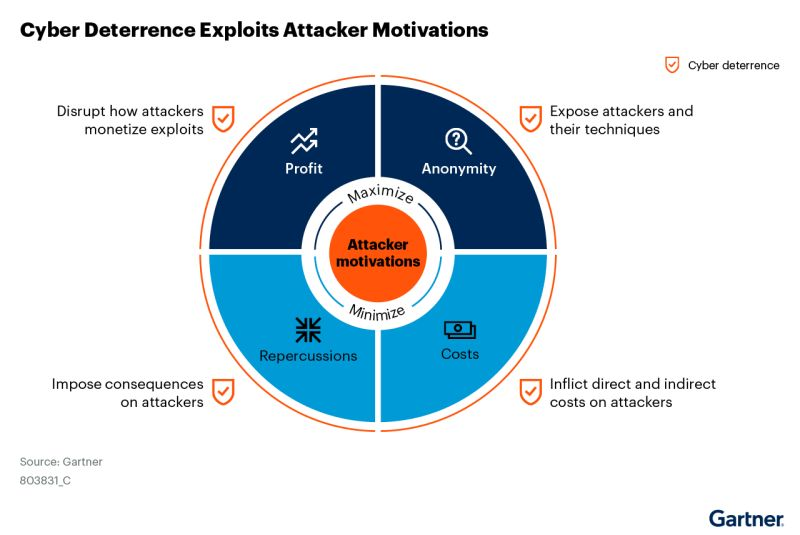
In an era where cyber threats are evolving at an unprecedented pace, organisations are constantly seeking innovative strategies to protect their digital assets. Traditional cybersecurity frameworks often emphasise reacting to risks, incidents, and vulnerabilities. While these approaches remain crucial, they overlook the potential of deterrence as a powerful risk mitigation tool.
Cyber deterrence is not about aggressive “hack back” strategies. Instead, it’s a sophisticated approach aimed at discouraging potential attackers by instilling doubt about their objectives or fear of consequences. This concept recognises that cybercriminals are rational actors who respond to incentives and seek to achieve their goals with minimal effort and cost.
If CISOs execute it well, an effective cyber deterrence can disrupt the rational calculations that cybercriminals make when selecting their targets.
1. Implementing Cyber Deterrence: The PARC Framework
One of the key frameworks for implementing cyber deterrence is Gartner’s PARC Framework, which focuses on four primary motivations of attackers: Profit, Anonymity, Repercussions, and Costs. By aligning deterrence tactics with these motivations, CISOs can create a structured approach to disincentivise attacks. For instance, by publicising a commitment to a no-ransom policy, organisations can undermine the profit motive that drives many ransomware attacks. Similarly, employing deception technologies can expose attackers and reduce their anonymity, making them less likely to target specific organisations.

To successfully implement a cyber deterrence programme, CISOs should first define and communicate the concept of deterrence across all levels. This involves debunking common myths and misconceptions that may hinder acceptance and fostering an understanding of how deterrence complements existing cybersecurity measures.
Engaging senior leaders and stakeholders is critical, as many deterrence tactics require collaboration and approval from various departments within the organisation. By establishing a formal cyber deterrence programme, CISOs can proactively address threats, ensuring that they are not only prepared to respond to attacks but also equipped to deter them effectively.
2. Publicising Deterrence Efforts
The importance of publicising deterrence efforts cannot be understated. Unlike traditional security measures that thrive on obscurity, deterrence requires visibility to be effective. Look to carefully craft messaging to communicate the commitment to cybersecurity without revealing sensitive details. This might include public statements about participation in threat intelligence sharing or the implementation of innovative security measures.
As the threat landscape continues to evolve, the integration of cyber deterrence into organisational strategies is not just beneficial; it is essential. By proactively addressing threats and instilling doubt in the minds of potential attackers, CISOs can significantly reduce vulnerability to cyber incidents.
Cyber deterrence represents a paradigm shift in how CISOs approach cybersecurity, moving beyond mere reaction to active prevention. As they look to the future, it is imperative to embrace this proactive strategy, ensuring that their organisations are well-equipped to deter attacks before they materialise.

William Candrick
William Candrick is a Senior Director Analyst at Gartner and Gartner analysts will further discuss digital risk management and strategies for cybersecurity resilience at the Security & Risk Management Summit 2024 in London, from 23-25 September.


